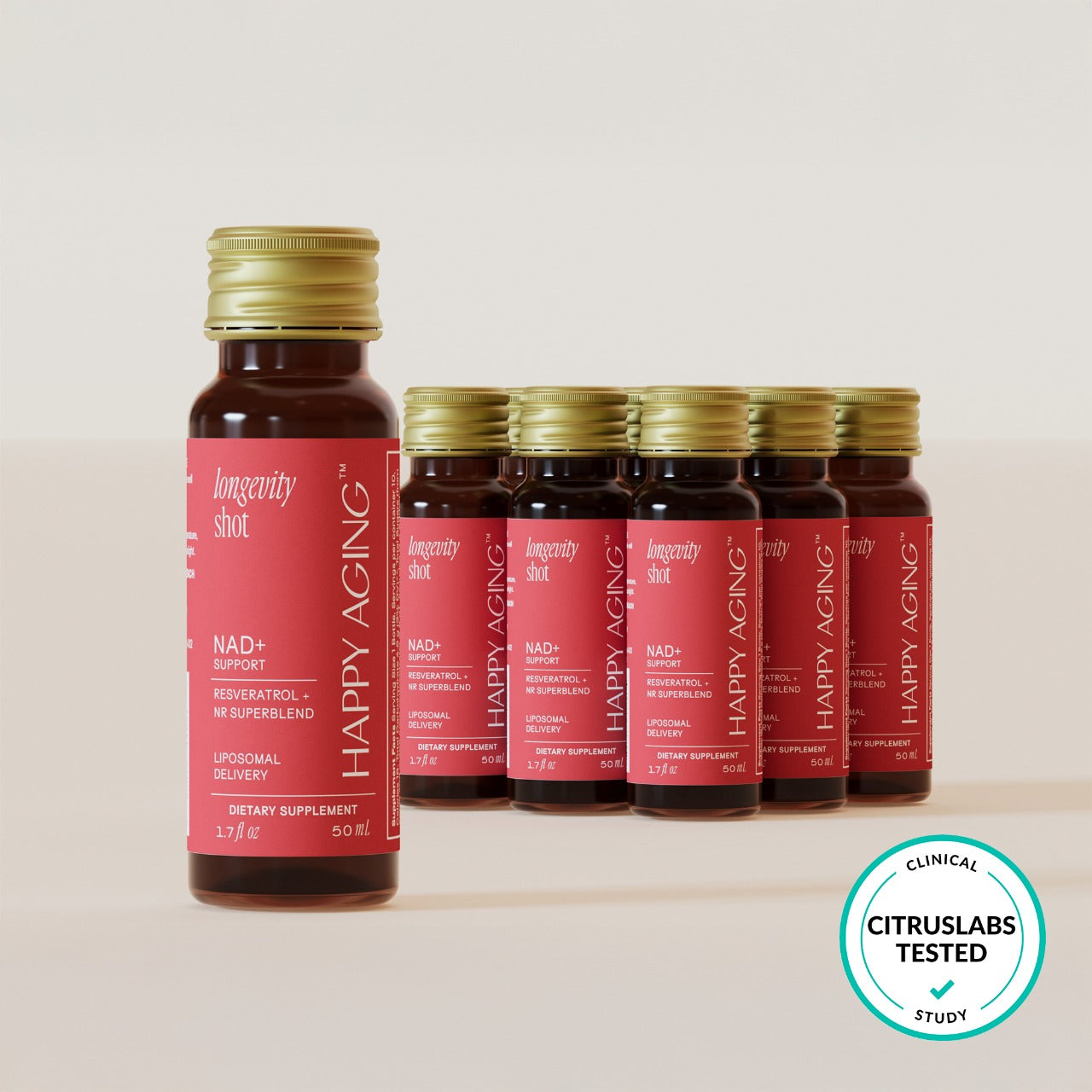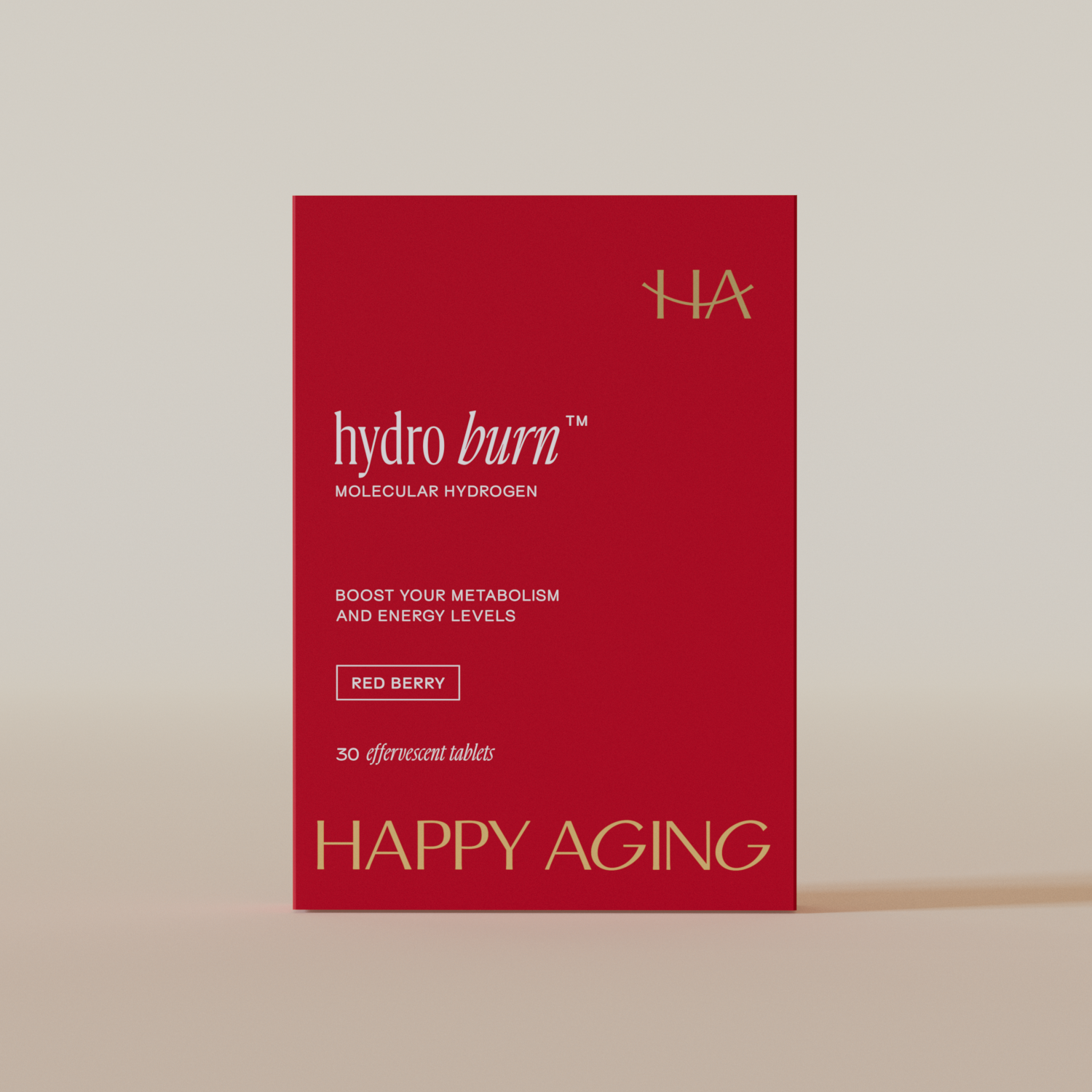Aging is a beautiful, natural process that we all experience, and it involves much more than the simple passage of time. Beneath the surface, a complex series of biological functions are happening, guiding the way we age.
While this process is inevitable, modern science has shown that we have the power to actively shape how we age through mindful lifestyle choices. Understanding the biology behind aging can help us make conscious choices that allow us to feel energized, healthy, and vibrant at every stage of life.
Let’s explore some key factors that contribute to the aging process - and how you can optimize them to support healthy aging.
Epigenetics
You may have heard that “genes are destiny,” but the emerging field of epigenetics challenges that notion. While our genetic blueprint comes from our ancestors, epigenetics influences how these genes are expressed—and lifestyle and environment play a pretty important role.
Positive choices can help “turn on” genes that promote longevity and “turn off” those linked to chronic disease and accelerated aging. By nourishing your body and mind with nutrient-dense food, daily movement, and mindfulness practices, you can positively influence your epigenetic expression and transform how your body ages over time.
Daily rituals to support your genes
- Start your day with an antioxidant-rich smoothie packed with leafy greens, berries, and a spoonful of flaxseeds to nourish your cells.
- Wind down in the evening with a 10-minute meditation to calm the mind, encourage deep sleep, and promote healthy gene expression.
Cellular communication
Your body is a team, where each player (cell) relies on clear and consistent communication to function at its best. Cellular communication, or signaling, refers to the way your cells send and receive messages to maintain balance and harmony. When this communication is flowing, your body can properly regulate metabolism, immune function, tissue repair, and other essential processes.
However, as we age, this cellular communication can become less efficient, leading to miscommunications that contribute to inflammation, oxidative stress, and other age-related concerns. You can keep your cells communicating well by supporting them with the right nutrients and daily habits.
Foods rich in antioxidants, like berries, leafy greens, and healthy fats, can help reduce oxidative stress and support cellular health. Staying well-hydrated and eating a balanced diet also provide your cells the nutrients they need to function at their best.
Daily rituals to support your cells
- Choose snacks like a handful of nuts (we love almonds, walnuts, and Brazil nuts) and a piece of raw dark chocolate (at least 70% cacao). These foods are rich in antioxidants and healthy fats, which support cellular health.
- Aim to drink at least half your body weight in ounces, plus an additional 12-16 ounces of water for every hour of exercise. Add electrolytes like sodium, potassium, and magnesium to boost cellular hydration.
Mitochondrial vitality
Your mitochondria are the energy powerhouses of your cells. They play an important role in producing the energy your body needs every day, from maintaining a healthy metabolism to supporting muscle function and cognitive health.As we age, mitochondrial function naturally declines, which can lead to decreased energy levels, a slower metabolism, and increased oxidative damage.
Regular movement (especially aerobic exercise), a diet rich in whole foods, and targeted nutrients like resveratrol and nicotinamide riboside (a form of vitamin B3) can keep your mitochondria happy and your energy levels high.
Daily rituals to support your mitochondria
- Enjoy a brisk 20-minute walk, a yoga class at your favorite studio, or a strength training session to keep your mitochondria active.
- Add nutrient-dense whole foods to your meals, like avocados, nuts, and omega-3-rich fatty fish, to get your fill of healthy fats, antioxidants, and essential nutrients for sustained energy.
Telomere health
Telomeres are like the protective caps at the ends of your DNA strands, much like the plastic tips at the ends of shoelaces. Their primary role is to protect your DNA during cell division. Over time, these telomeres naturally shorten, which can lead to cellular aging and a higher risk of age-related diseases.
You can slow the shortening of telomeres and preserve your cellular health through mindful habits. An antioxidant-rich diet, regular movement, a calm mind, and quality sleep all play a role in maintaining telomere length and supporting healthy aging at the cellular level.
Daily rituals to support your telomeres
- Wind down with a relaxing evening ritual—sip on chamomile tea, practice gentle stretching, or take a warm bath to reduce stress and promote restful sleep, which helps protect your telomeres.
- Add more colorful fruits and veggies like bell peppers, berries, and leafy greens to your diet for a diverse range of antioxidants that protect your DNA.
Small changes to age well
Did you notice a theme? Integrating these small changes into your daily routine—whether it’s choosing nutrient-dense foods, managing stress, or staying active—all have profound effects on the way you age. With these daily choices, you can support your body in aging gracefully, preserving your health, energy, and well-being for years to come.
Resources
- Belsky, D. W., Caspi, A., Arseneault, L., et al. (2015). Quantification of biological aging in young adults. Proceedings of the National Academy of Sciences, 112(30), E4104–E4110.
- Gardner, M., Bann, D., Wiley, L., et al. (2014). Gender and telomere length: Systematic review and meta-analysis. Experimental Gerontology, 51, 15-27.
- Kaliman, P., Álvarez-López, M. J., Cosín-Tomás, M., et al. (2014). Rapid changes in histone deacetylases and inflammatory gene expression in expert meditators. Psychoneuroendocrinology, 40, 96-107.
- Lee, I. M., Shiroma, E. J., Lobelo, F., et al. (2012). Effect of physical inactivity on major non-communicable diseases worldwide: an analysis of burden of disease and life expectancy. The Lancet, 380(9838), 219-229.
- Popkin, B. M., D’Anci, K. E., & Rosenberg, I. H. (2010). Water, hydration, and health. Nutrition Reviews, 68(8), 439-458.
- Prather, A. A., Puterman, E., Lin, J., et al. (2015). Shorter leukocyte telomere length in midlife women with poor sleep quality. Psychoneuroendocrinology, 63, 162-168.
- Ros, E. (2010). Health benefits of nut consumption. Nutrients, 2(7), 652-682.
- Safdar, A., & Tarnopolsky, M. A. (2018). Exercise-induced mitochondrial biogenesis in skeletal muscle. Frontiers in Physiology, 9, 738.
- Stover, P. J., Field, M. S. (2015). Vitamin B-6, B-12, and folate status in women of reproductive age: biomarkers and health outcomes. American Journal of Clinical Nutrition, 102(6), 1470S-1485S.
- Venter, C., & Eyerich, S. (2018). Nutritional strategies in the prevention and therapy of allergic diseases. Frontiers in Immunology, 9, 1965.



